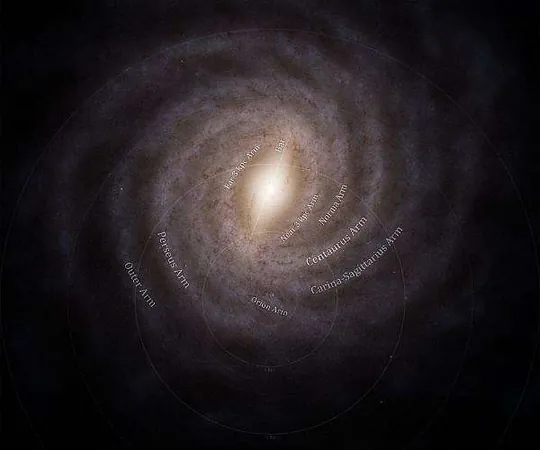
Gaia Reveals Stunning Stellar Networks Across the Milky Way!
2025-09-01
Author: Yu
A Cosmic Revelation from Gaia!
In a groundbreaking leap for astronomy, Gaia, the European Space Agency’s star-mapping mission, has fundamentally altered our understanding of the Milky Way's stellar communities. After over a decade of meticulous observations, this revolutionary spacecraft has unveiled that star clusters, previously thought to be solitary, are interconnected in extensive chains stretching across the galaxy.
Transforming Astronomy with Unmatched Precision!
Launched in 2013 and operational until early 2025, Gaia has forever changed the landscape of astronomy. It has precisely charted the positions, motions, and brightness of billions of stars, showcasing the dynamic nature of star clusters. These clusters evolve, dissolve, and leave behind spectacular tidal tails of stars and gas, a true testament to cosmic interactions.
Stellar Families: A New Perspective!
Gaia’s findings shatter the notion that open clusters and stellar associations exist in isolation. Instead, these stellar chains are part of expansive familial structures featuring filaments and streams that can last for millions of years. The research sheds light on the intricate processes that trigger and shape star formation, influenced by stellar feedback and galactic forces.
Mapping the Galactic Landscape!
Thanks to Gaia’s groundbreaking measurements, astronomers are now able to map dark molecular clouds, star-forming nurseries, and influential nearby stellar associations like Orion OB1 and Scorpius-Centaurus. Furthermore, Gaia has redefined large-scale structures, such as the Gould Belt, revealing connections to elongated gas spurs threading through the Milky Way's disc.
Witness the Cosmic Tidal Tails!
Gaia has also discovered extensive tidal tails encircling clusters such as the Hyades and Coma Berenices. These astonishing trails stretch over thousands of light-years and capture the ongoing transformations of clusters as they engage with molecular clouds, spiral arms, and dark matter.
A Revolution in Milky Way Astronomy!
"Gaia's datasets surpass any astronomical data we've seen before. It’s no exaggeration to say that this mission has sparked a revolution in our understanding of the Milky Way, particularly regarding star clusters," said Johannes Sahlmann, ESA Project Scientist for Gaia.
What’s Next for Gaia's Discoveries?
While Gaia's active observation phase has concluded, a trove of data is still waiting to be released. The forthcoming major catalogues, Data Release 4 and 5, slated for 2026 and 2030 respectively, promise to unveil even more astonishing discoveries that will undoubtedly transform our perception of the galaxy.
Unveiling the Secrets of Our Galaxy!
Stay tuned as Gaia continues to illuminate the mysteries of the Milky Way, setting the stage for an even deeper understanding of our cosmic neighborhood!


 Brasil (PT)
Brasil (PT)
 Canada (EN)
Canada (EN)
 Chile (ES)
Chile (ES)
 Česko (CS)
Česko (CS)
 대한민국 (KO)
대한민국 (KO)
 España (ES)
España (ES)
 France (FR)
France (FR)
 Hong Kong (EN)
Hong Kong (EN)
 Italia (IT)
Italia (IT)
 日本 (JA)
日本 (JA)
 Magyarország (HU)
Magyarország (HU)
 Norge (NO)
Norge (NO)
 Polska (PL)
Polska (PL)
 Schweiz (DE)
Schweiz (DE)
 Singapore (EN)
Singapore (EN)
 Sverige (SV)
Sverige (SV)
 Suomi (FI)
Suomi (FI)
 Türkiye (TR)
Türkiye (TR)
 الإمارات العربية المتحدة (AR)
الإمارات العربية المتحدة (AR)